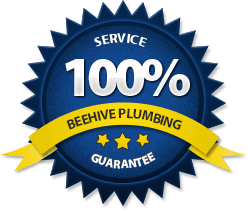Understanding what’s causing your low water pressure is the first step towards a successful plumbing repair

One of the most frustrating plumbing repairs that a home can experience is low water pressure issues, and this is because low water pressure directly affects the quality of your showers and faucet functionality.
But one thing that homeowners need to keep in mind when it comes to these types of tub and shower repairsis why your low water pressure issues are occurring. The truth is that there is a whole array of different causes that can affect a property’s water pressure, and low water pressure just so happens to be one of the most common types of residential plumbing issues throughout Northern Utah.
So what the Master Plumbers at Beehive Plumbing have done on this page is compile 6 of the most common causes of low water pressure issues that you should know about!
1. Your Plumbing Fixtures Are Dysfunctional
Dysfunctional plumbing fixtures are by far one of the most common warning signs associated with low water pressure issues; so if any of your faucets or showerheads seem to be broken in any way, then it’s a clear sign that you could be dealing with water pressure problems.
Dysfunctional fixtures may be rooted in some sort of structural damage, but there are other instances in which mineral buildup within the fixture is the culprit. But no matter what exactly is happening with your fixture, if it’s not working properly then it’s going to need to be either repaired or replaced.
2. Your Property’s Pressure Regulator Has Become Damaged
A water pressure regulator is a device that helps stabilize the overall flow of water throughout a property, but the sad truth is that your home or business’ regulator can eventually experience regular wear and tear after many years of usage that then leads to failing functionality.
The result of a failing water pressure regulator will many times result in low water pressure issues. The only true fix to this sort of water pressure problem is to have your pressure regulator replaced.
3. Your Pressure Valves Are Closed
Every household’s water supply will entail two pressure valves, and the function of these valves is to regulate the water pressure that’s sent from a municipal water supply into your home’s plumbing system.
So this subsequently means that there will be a direct effect upon your property’s water pressure in terms of how open (or closed) these pressure valves currently are.
What commonly happens is that a home’s pressure valves will become partially closed, which then creates a less than optimal water pressure. But what’s good about this common water pressure issue is that it entails a really simple fix, because all you’ll need to do is simply open your pressure valve back up!
4. Using Water Simultaneously
Simultaneous usage can also commonly lead to low water pressure problems, so if you’re utilizing multiple plumbing fixtures at the same time then this type of usage can simply be causing your water pressure to dramatically decrease.
This of course is not a plumbing issue that occurs in every home, and this usually would only occur in certain homes when about 5-6 plumbing fixtures are being utilized at once.
This type of plumbing problem can generally be resolved by mitigating and staggering simultaneous water usage; and if the low water pressure is extreme, our team will always be there for you to make the proper repairs.
5. Mineral Buildup
When your pipes are experiencing internal mineral buildup, it can rather commonly be the root cause of low water pressure. This type of mineral buildup will happen in parts of the country that experience hard water, and Northern Utah just so happens to be one of these hard water areas.
This type of low water pressure cause will typically increase in severity over long periods of time, so it can be hard for homeowners to even realize how they’ve come to a point in which their property’s water pressure has dramatically decreased.
Water softeners tend to be a good installation idea when it comes to resolving this type of mineral buildup issue, but you also may need extensive pipe repairs or even replacements prior to your water softener installation in order to effectively eliminate the buildup within your home’s plumbing system.
6. Source Pressure Issues
Although it’s much more common for low water pressure issues to be rooted in a home’s plumbing system, there are instances in which a home experiences low water pressure due to source pressure issues.
Your home’s “source pressure” is the pressure within your property’s municipal water supply or well. When a city’s piping system has become damaged, it can be more difficult to deliver desirable water pressure.
So if our team discovers that your home is actually experiencing source pressure issues, then we’ll help you reach out to the city and have them resolve the issue as promptly as possible.
However, if your home utilizes a well then you’re going to need our plumbing specialists to help resolve the root of the water pressure problem!
Reach Out To The Plumbing Specialists At Beehive Plumbing To Learn More About How We Support Homes And Businesses Experiencing Low Water Pressure Issues!
Beehive Plumbing has always gone above and beyond to support homes and businesses throughout Northern Utah when they need us most, and we certainly understand how timely a low water pressure repair is for you and your property’s functionality.
So always feel free to reach out to us online or call us at 801-661-8155 to get in touch with our team of plumbing experts and let us know what’s currently happening with your property’s water pressure!













